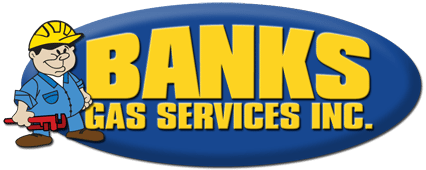Current Open Positions
Please read over the below positions before completing an Employment Form. You will be asked which position(s) you are applying for.
Mechanic
- Test drive vehicles and test components and systems, using equipment such as infrared engine analyzers, compression gauges, and computerized diagnostic devices.
- Examine vehicles to determine extent of damage or malfunctions.
- Repair, reline, replace, and adjust brakes.
- Follow checklists to ensure all important parts are examined, including belts, hoses, steering systems, spark plugs, brake and fuel systems, wheel bearings, and other potentially troublesome areas.
- Perform routine and scheduled maintenance services, such as oil changes, lubrications, and tune-ups.
- Test and adjust repaired systems to meet manufacturers’ performance specifications.
- Review work orders and discuss work with supervisors.
- Tear down, repair, and rebuild faulty assemblies, such as power systems, steering systems, and linkages.
- Plan work procedures, using charts, technical manuals, and experience.
- Disassemble units and inspect parts for wear, using micrometers, calipers, and gauges.
- Repair or replace parts such as pistons, rods, gears, valves, and bearings.
- Rewire ignition systems, lights, and instrument panels.
- Repair manual and automatic transmissions.
- Repair hydraulic systems.
- Repair air brake systems.
- Repair trailers.
- Repair excavators and compressors.
Traffic Control Specialist, (flagger)
- Person on construction sites who control traffic.
- Keep traffic flowing through a construction zone, despite a shutdown of lanes
- Must be able to work in teams, with each person controlling the flow of traffic in a certain direction.
- Will be required to stand on their feet for long periods of time.
- Be physically fit and able to lift objects up to 50 pounds.
- Position requires good vision and hearing. Work takes place during all weather conditions and day and night hours. Possess excellent communication skills.
Foreman
- Perform a variety of task at all kinds of construction sites.
- Clean or prepare construction sites to eliminate possible hazards.
- Load, unload, or identify building materials, machinery, or tools, distributing them to the appropriate locations, according to project plans or specifications.
- Operate jackhammers or drills to break up concrete or pavement
- Set up or dismantle scaffolding, shoring, braces, traffic barricades, ramps, or other temporary structures.
- Dig ditches or trenches, backfill excavations, or compact and level earth to grade specifications, using picks, shovels, tampers, or rakes.
- Locate existing pipes needing repair or replacement, using magnetic or radio indicators.
- Install piping.
General Laborer
- Perform a variety of task at all kinds of construction sites.
- Clean or prepare construction sites to eliminate possible hazards.
- Load, unload, or identify building materials, machinery, or tools, distributing them to the appropriate locations, according to project plans or specifications.
- Operate jackhammers or drills to break up concrete or pavement
- Set up or dismantle scaffolding, shoring, braces, traffic barricades, ramps, or other temporary structures.
- Dig ditches or trenches, backfill excavations, or compact and level earth to grade specifications, using picks, shovels, tampers, or rakes.
- Locate existing pipes needing repair or replacement, using magnetic or radio indicators.
- Install piping.
Asphalt and Concrete Finishers
Smooth and finish surfaces of poured concrete, such as floors, walks, sidewalks, roads, or curbs using a variety of hand and power tools. Align forms for sidewalks, curbs, or gutters; patch voids; and use saws to cut expansion joints.
- Set the forms that hold concrete to the desired pitch and depth, and align them.
- Check the forms that hold the concrete to see that they are properly constructed.
- Spread, level, and smooth concrete, using rake, shovel, hand or power trowel, hand or power screed, and float.
- Monitor how the wind, heat, or cold affect the curing of the concrete throughout the entire process.
- Direct the casting of the concrete and supervise laborers who use shovels or special tools to spread it.
- Produce rough concrete surface, using broom.
- Mold expansion joints and edges, using edging tools, jointers, and straightedge.
- Clean chipped area, using wire brush, and feel and observe surface to determine if it is rough or uneven.
- Signal truck driver to position truck to facilitate pouring concrete, and move chute to direct concrete on forms.
- Apply hardening and sealing compounds to cure surface of concrete, and waterproof or restore surface.
- Operate power vibrator to compact concrete.
- Chip, scrape, and grind high spots, ridges, and rough projections to finish concrete, using pneumatic chisels, power grinders, or hand tools.
- Cut out damaged areas, drill holes for reinforcing rods, and position reinforcing rods to repair concrete, using power saw and drill.
- Waterproof or restore concrete surfaces, using appropriate compounds.
- Wet concrete surface, and rub with stone to smooth surface and obtain specified finish.
Landscaper
Landscape or maintain grounds of property using hand or power tools or equipment. Workers typically perform a variety of tasks, which may include any combination of the following: sod laying, trimming, planting, watering, fertilizing, digging, and raking.

